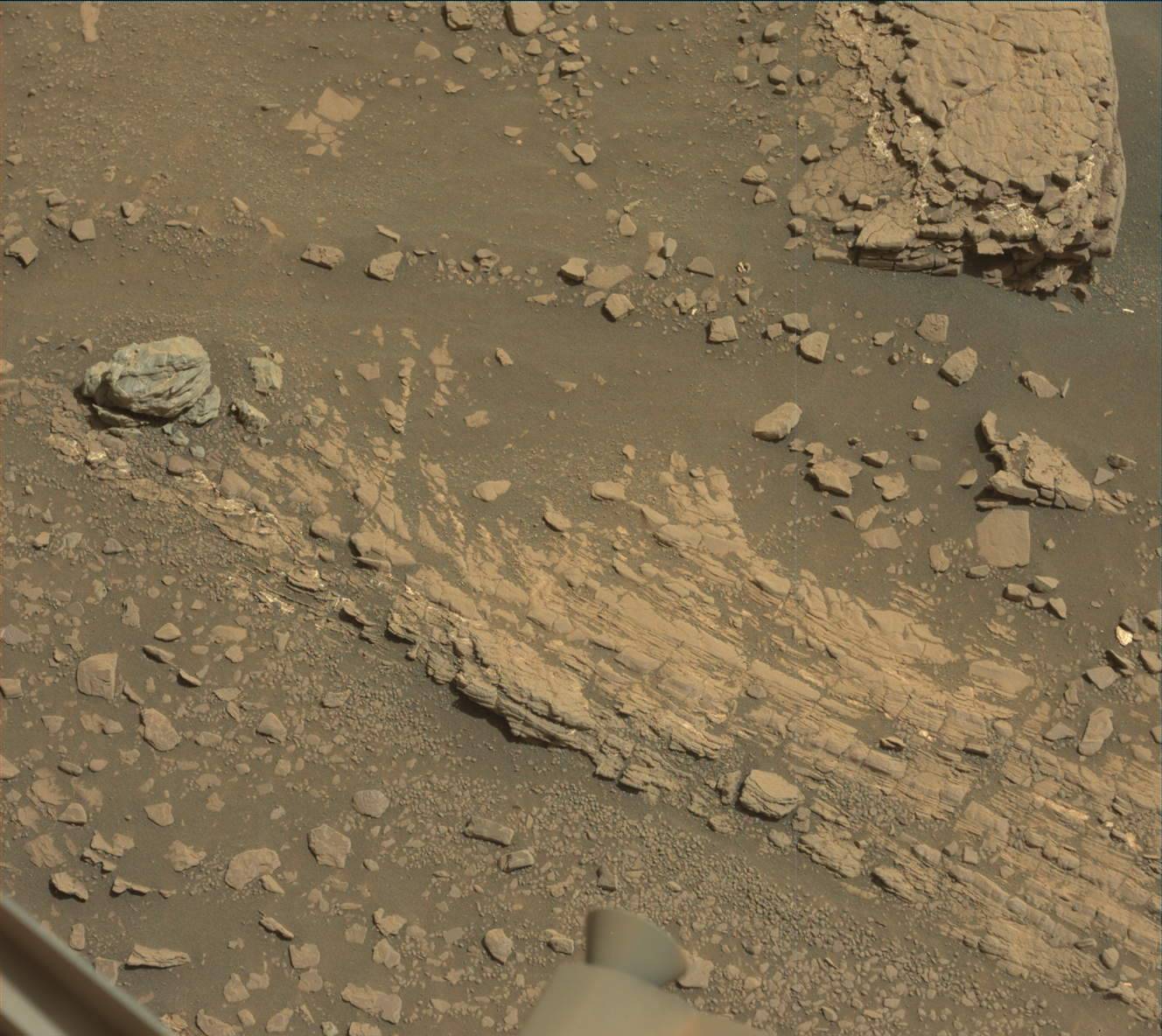June 14, 2019
Sol 2436: So many choices, so little time

The planning day started with a change of plans. Due to a late-breaking change in relay pass scheduling, the decisional pass (the communication pass carrying the latest information about Curiosity's location and state to arrive before the start of planning on Earth the next day) in today's plan was much earlier in the plan than we expected. That meant that Curiosity had to wrap up her activities earlier in the sol than we initially thought. The science team had to rapidly decide how to use the limited time available for rover activities. We could choose to stay at our current position, parked along the side of a pebble-covered clay-bearing unit ridge (pictured above), for activities today and over the weekend. Or we could choose to drive off to another location for the weekend. There were many drive targets to choose from, from interesting rocks at the top of the ridge (also visible in the image above) to bedrock exposures along the base of the ridge. The science team spent a lot of time weighing the pros and cons of each target in the wider context of our study of the ridge and the clay-bearing unit. We eventually decided to drive to a small outcrop patch about 30 m away, where we will be able to invest time studying the outcrop while also gazing up along the ridge to look for other bedrock exposures and clues about its structure.
We did manage to squeeze in a bit of science before the drive, however. We will acquire a ten-image ChemCam RMI mosaic across the aforementioned interesting rocks at the top of the ridge, and Navcam and Mastcam images to measure the amount of dust in the atmosphere. After the drive, and thus after the decisional pass, we had more time for science - just because we will not get the data back before planning tomorrow does not mean the science is not worthwhile! We will acquire a ChemCam raster from an autonomously-selected target in our workspace and another Mastcam observation of the sky. Near twilight, we will acquire a Navcam cloud movie. At the same time, InSight will also be looking for clouds. The coordinated observations could constrain the height at which clouds occur, giving us a lofty end to a busy day!





